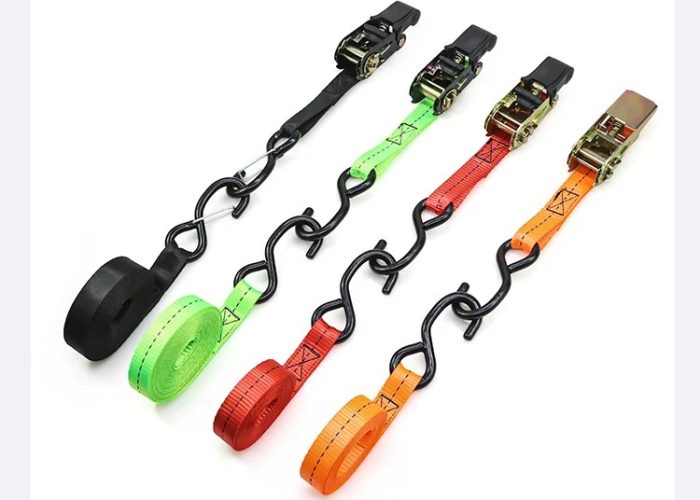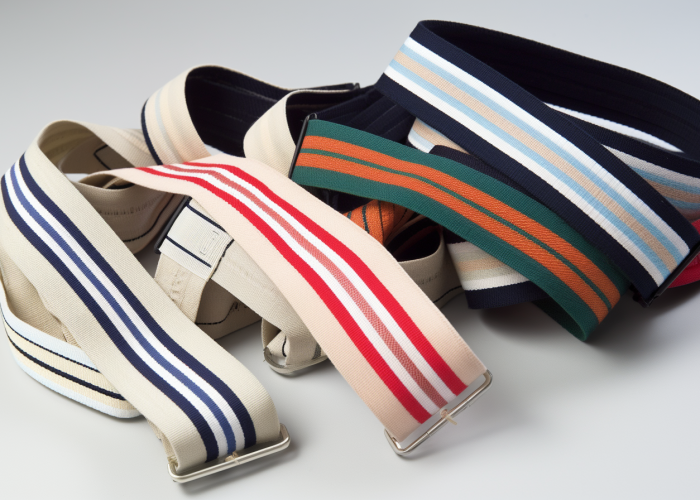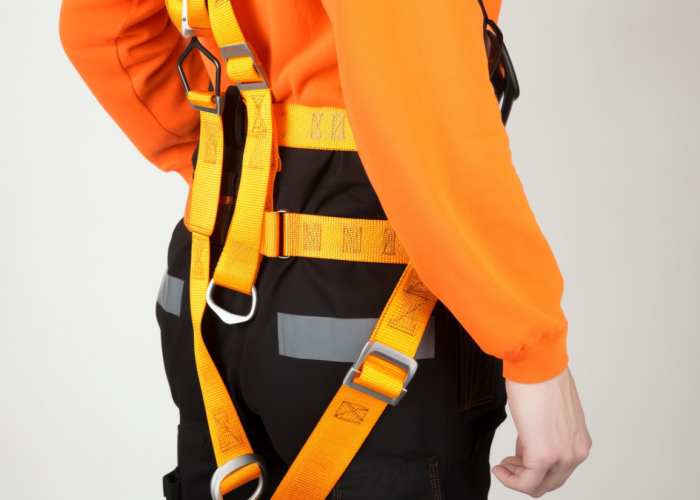Selecting the right webbing construction for load-bearing applications requires understanding how tubular and flat designs perform under different conditions. Engineering teams often encounter conflicting strength claims when comparing these construction methods, leading to confusion during material selection. As custom webbing manufacturers, we work directly with product developers to optimize construction methods, material specifications, and performance characteristics for their specific engineering requirements.
Not always—flat webbing can be stronger depending on the spec. Standard MIL-W-4088 flat webbing reaches 9,800 lbs, while MIL-W-5625 tubular webbing holds 4,000 lbs. However, high-performance tubular variants with advanced fibers can outperform flat webbing in some cases.
Explore strength variations, key performance data, and how technical consultation helps optimize webbing selection and reduce manufacturing costs.


Webbing manufacturing expert with 15+ years of experience helping product developers build high-performance straps for industrial, medical, and outdoor use.
1-inch tubular webbing (MIL-W-5625) has a 4,000 lb breaking strength, while standard flat webbing rates 3,000–3,800 lbs. High-performance flat types like MIL-W-4088 Type 7 reach 6,000 lbs, and Type 9800 up to 9,800 lbs—exceeding tubular webbing in tensile strength.
KEY STRENGTH COMPARISON:
Standard tubular webbing‘s double-layer cylindrical design provides 25-30% more material in the load path compared to flat webbing, creating superior stress distribution and load-bearing capacity. This construction method allows the webbing to maintain structural integrity under varied loading conditions while distributing forces more evenly across the material width.
The dramatic strength variations come from fiber quality and manufacturing standards, where material specifications determine ultimate performance capabilities. Military specifications (MIL-W-5625, MIL-W-4088) ensure consistent breaking strength through controlled fiber selection, weaving density requirements, and quality testing protocols that generic webbing may not follow.
Engineering consultation helps identify the optimal construction method and material specifications to achieve target strength requirements. Custom manufacturing approaches can optimize specific fiber compositions and weaving techniques that maximize breaking strength while maintaining cost-effectiveness for particular load-bearing applications.
Military webbing specs like MIL-W-5625 and MIL-W-4088 set standards for material, strength, and construction. MIL-W-5625 covers tubular webbing rated at 4,000 lbs, while MIL-W-4088 defines flat webbing with strengths from 6,000 to 9,800 lbs, depending on type.
KEY MILITARY SPECIFICATIONS:
Military specifications establish rigorous standards that commercial webbing often cannot match. MIL-W-5625 requires specific nylon fiber grades, precise weaving patterns, and mandatory testing protocols that ensure tubular webbing consistently achieves 4,000 lbs breaking strength across different production batches. These requirements include fiber tenacity minimums, weave density specifications, and environmental resistance testing.
MIL-W-4088 covers multiple flat webbing classifications with varying performance levels. Type 7 flat webbing must achieve 6,000 lbs breaking strength through controlled high-tenacity nylon fibers and specialized weaving techniques. The most demanding Type 9800 specification requires 9,800 lbs breaking strength, achievable only through premium fiber selection and precision manufacturing processes that optimize every aspect of the weave structure.
Custom manufacturing can incorporate military specification standards into commercial applications where enhanced reliability is essential. Understanding these specification requirements helps product developers select appropriate performance levels and identify opportunities to optimize designs through controlled manufacturing processes that meet or exceed military standards for their specific applications.

Use tubular webbing for dynamic loads, abrasion, and flexibility—ideal for climbing and rescue. Choose flat webbing for static high-load applications like cargo restraints and military gear, where maximum tensile strength is critical.
APPLICATION SELECTION GUIDE:
Dynamic loading environments favor tubular webbing due to its shock-absorbing properties and flexibility. The double-layer construction distributes impact forces more effectively, while the tubular structure compresses under load to reduce peak stress concentrations. This makes tubular webbing essential for climbing applications, rescue operations, and any situation involving sudden load changes or repeated stress cycles.
Static high-load applications benefit from flat webbing’s superior tensile strength and even load distribution characteristics. Specialized flat webbing like MIL-W-4088 achieves 6,000-9,800 lbs breaking strength, making it ideal for cargo restraints, parachute harnesses, and military equipment where maximum strength per unit weight is critical. The flat profile also provides better surface contact with hardware and buckles.
Environmental factors significantly influence selection decisions. Tubular webbing’s enhanced abrasion resistance makes it superior for applications involving rough surfaces, sharp edges, or frequent movement. Flat webbing performs better in controlled environments where maximum tensile strength is the primary requirement and abrasion concerns are minimal.
QUICK SELECTION GUIDE:
Choose Tubular Webbing If: Choose Flat Webbing If:
Dynamic/shock loading present Static loads only
Sharp edges or abrasive contact Controlled, smooth environments
Flexibility and knot-tying needed Maximum strength per weight required
Climbing, rescue, safety applications Cargo restraints, harnesses, strapping
Budget allows for premium durability Cost optimization is priority
Frequent load cycling expected Steady, consistent loading
Tubular webbing is more durable in abrasive conditions thanks to its double-layer design and edge protection. Flat webbing lasts longer in static, controlled environments but is more prone to damage from sharp edges and friction points.
DURABILITY COMPARISON:
Abrasion resistance represents the most significant durability difference between construction types. Tubular webbing’s double-layer design provides essentially twice the material thickness at wear points, allowing it to withstand prolonged contact with rough surfaces, sharp edges, and abrasive materials. The cylindrical structure also allows the webbing to rotate slightly under load, distributing wear across different surface areas rather than concentrating damage in single locations.
Edge protection capabilities give tubular webbing a substantial advantage in real-world applications. When webbing contacts sharp metal edges, rock surfaces, or hardware corners, the tubular construction prevents cutting through to core fibers. Flat webbing tends to develop localized wear patterns that progress rapidly once started, leading to premature failure at stress concentration points.
Environmental factors significantly impact durability performance for both types. Tubular webbing maintains its durability advantages in harsh conditions involving moisture, temperature cycling, and UV exposure. However, high-quality flat webbing with appropriate protective treatments can achieve excellent longevity in controlled indoor applications where abrasion and edge contact are minimal concerns.
DURABILITY DECISION MATRIX:
Environment Type Recommended Choice Key Durability Factor
Outdoor/Abrasive Tubular Webbing Double-layer edge protection
Indoor/Controlled Either (cost-dependent) Load type determines choice
Sharp Edge Contact Tubular Webbing Superior cut resistance
High-Cycle Loading Tubular Webbing Better fatigue resistance
Static/Clean Environment Flat Webbing Cost-effective durability
Yes, webbing can be custom made for strength by selecting high-tenacity fibers, optimizing weave patterns, and adjusting width. These factors allow manufacturers to meet specific load and performance requirements.
CUSTOMIZATION OPTIONS:
Fiber composition represents the most impactful customization for strength enhancement. Standard nylon fibers can be replaced with high-tenacity variants that increase breaking strength by 15-25% without changing webbing dimensions. Premium fiber grades offer even greater performance improvements, with some specialty fibers achieving 40-50% strength increases over commercial-grade materials.
Weave pattern optimization allows fine-tuning of strength characteristics for specific applications. Increasing weave density adds more load-bearing fibers per inch, directly improving tensile strength. Specialized weaving techniques can optimize fiber alignment to maximize strength in primary load directions while maintaining flexibility in secondary directions.
Width and thickness modifications provide straightforward strength scaling options. Increasing webbing width proportionally increases breaking strength, while thickness adjustments can enhance specific performance characteristics. Custom dimensional combinations allow achieving target strength levels while optimizing weight, flexibility, and cost parameters for particular applications.
CUSTOMIZATION DECISION CHECKLIST:
Your Requirement Recommended Customization Typical Strength Gain
20–30% more strength High-tenacity nylon fibers 25% increase
40–50% more strength Premium specialty fibers 45% increase
Specific width needed Custom dimensional specs Proportional to width
Unique load pattern Modified weave density 15–20% optimization
Military compliance MIL-spec fiber/process Meets specification exactly
Custom webbing costs 15–40% more than standard webbing. Price depends on fiber type, weave complexity, and order size. High-tenacity fibers add 20–30%, and custom weaves or dimensions add another 10–15% based on design complexity.
COST FACTORS:
Material selection drives the primary cost differential in custom webbing manufacturing. High-tenacity nylon fibers command 20-30% premiums over standard commercial grades, while specialty fibers for extreme performance applications can increase costs by 40-60%. However, these material upgrades often provide 25-50% strength improvements, delivering excellent value for applications requiring enhanced performance.
Manufacturing complexity affects pricing through setup costs and production efficiency factors. Custom weave patterns require specialized equipment setup and may reduce production speeds, adding 10-15% to base manufacturing costs. However, larger order quantities help amortize these setup costs, making custom options more cost-effective for substantial volume requirements.
Early collaboration during product development phases can optimize cost-effectiveness by identifying the most efficient approaches to achieve target performance. Design modifications that leverage standard manufacturing processes while incorporating custom elements often provide 80% of custom performance benefits at 20-30% of full customization costs.

Webbing strength is tested using tensile machines that pull the material until it breaks, measuring force in pounds. Tests follow ASTM D6775 standards, with controlled sample prep, loading rates, and conditions to ensure accurate, consistent results.
TESTING PROTOCOLS:
Standard testing procedures ensure reliable and comparable strength measurements across different manufacturers and materials. ASTM D6775 specifies exact sample dimensions, grip configurations, and loading rates to eliminate variables that could affect test results. Samples must be conditioned at specific temperature and humidity levels before testing to account for environmental effects on material properties.
Quality control testing occurs at multiple production stages to verify consistent performance. Raw material testing confirms fiber strength specifications, while in-process testing monitors weaving quality and dimensional accuracy. Final product testing validates breaking strength against specifications and identifies any manufacturing variations that could affect performance.
Third-party testing certification provides independent verification of performance claims for critical applications. Certified testing facilities use calibrated equipment and standardized procedures to generate test reports that meet military specifications, safety standards, and insurance requirements. This testing documentation supports product liability requirements and helps validate design safety factors for engineering applications.
Understanding webbing strength requires evaluating both construction methods and material specifications within your application context. Standard tubular webbing provides 4,000 lbs strength with superior abrasion resistance, while specialized flat webbing achieves up to 9,800 lbs for maximum tensile requirements. Contact us to explore manufacturing solutions tailored to your webbing requirements.
Standard custom webbing requires 2-3 weeks for development and sampling, with production runs typically completed within 4-6 weeks depending on order quantities and complexity requirements.
Minimum orders start at 500 yards for standard customizations and 1,000 yards for specialized fiber or weave modifications, with volume discounts available for larger quantities.
Yes, we offer high-tenacity nylon fibers for 25% strength increases and premium specialty fibers for up to 50% performance improvements over standard commercial grades.
Early consultation during initial design phases provides optimal results, allowing us to recommend manufacturing approaches that enhance performance while maintaining cost-effectiveness for your application.
Industry standards recommend 5:1 safety factors for critical applications and 3:1 for general use, meaning 4,000 lbs webbing should have working loads of 800-1,300 lbs respectively.
We provide complete test documentation including breaking strength certificates, material compliance reports, and third-party testing verification for military specifications and safety-critical applications.